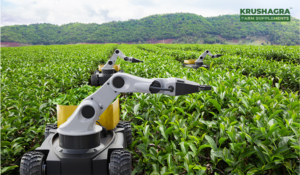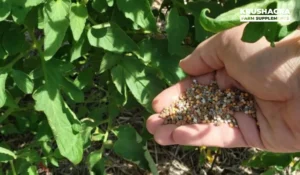Introduction
As the world embraces sustainable and eco-friendly agriculture practices, biofertilizers have gained popularity as a natural alternative to conventional chemical fertilizers. Biofertilizers are living organisms that promote plant growth by enhancing nutrient availability and improving soil health. They offer numerous benefits, including increased crop productivity, reduced environmental impact, and long-term soil fertility. However, selecting the right biofertilizer for specific crops and nutrient requirements can be a daunting task. In this guide, we will explore the factors to consider and provide valuable insights to help you make informed decisions when choosing biofertilizers.
Understand Your Crop’s Nutrient Requirements
Different crops have varying nutrient requirements. Before selecting a biofertilizer, it is crucial to understand the specific nutrient needs of your crop. Conduct a soil test to determine the soil’s nutrient status and identify any deficiencies. This will help you determine which nutrients your crop requires and guide you in selecting the appropriate biofertilizer formulation.
Know the Types of Biofertilizers
Biofertilizers can be broadly classified into three categories based on the type of microorganisms they contain:
A. Nitrogen– Fixing Biofertilizers: These biofertilizers contain nitrogen-fixing bacteria, such as Rhizobium, Azotobacter, and Azospirillum. They convert atmospheric nitrogen into a plant-usable form, thus improving nitrogen availability in the soil. Leguminous crops, such as peas, beans, and lentils, greatly benefit from nitrogen-fixing biofertilizers.
B. Phosphate– Solubilizing Biofertilizers: Phosphorus is an essential nutrient for plant growth, and phosphate-solubilizing biofertilizers help enhance its availability in the soil. These biofertilizers contain phosphate-solubilizing microorganisms, such as Bacillus and Pseudomonas species. Crops with high phosphorus requirements, such as cereals, oilseeds, and vegetables, can benefit from phosphate-solubilizing biofertilizers.
C. Potash– Mobilizing Biofertilizers: Potassium is crucial for overall plant growth and stress tolerance. Potash-mobilizing biofertilizers contain microorganisms, such as Bacillus, that aid in releasing bound potassium from the soil, making it more accessible to plants. Crops like fruits, vegetables, and tubers that require higher levels of potassium can benefit from potash-mobilizing biofertilizers.
Evaluate Biofertilizer Quality and Compatibility:
When selecting a biofertilizer, ensure it meets certain quality standards. Look for biofertilizers that are certified by relevant regulatory bodies, as they undergo rigorous testing to ensure efficacy and safety. Additionally, consider the compatibility of the biofertilizer with other agrochemicals, such as pesticides and fungicides, to avoid any adverse interactions that could impact crop health.
Consider Soil and Environmental Factors
Different biofertilizers thrive under different soil and environmental conditions. Factors such as pH, temperature, moisture, and organic matter content can influence the performance of biofertilizers. Some biofertilizers are specific to certain soil types or climates, while others have a broader range of adaptability. Evaluate your soil and environmental conditions to select a biofertilizer that is well-suited to your farming conditions.
Assess Cost-Effectiveness and Application Methods
Consider the cost-effectiveness of biofertilizers compared to chemical fertilizers. While biofertilizers may have a higher initial cost, their long-term benefits and potential savings in chemical inputs should be taken into account. Additionally, assess the ease of application and compatibility with your existing farming practices. Biofertilizers can be applied as seed treatments, soil amendments, or foliar sprays, so choose a method that aligns with your crop management techniques.
Seek Expert Advice and References
Consulting with agricultural experts, agronomists, or experienced farmers can provide valuable insights into the selection of biofertilizers. They can offer guidance based on their knowledge and experience with specific crops and biofertilizer products. Additionally, consider seeking references from reliable sources, such as research institutions or agricultural extension services, to identify biofertilizers that have been scientifically tested and proven effective.
Start with Small Trials
Before implementing a biofertilizer on a large scale, conduct small-scale trials on a portion of your farm to observe its effects. Assess the crop’s response, yield, and overall health. This will help you evaluate the effectiveness of the biofertilizer and make adjustments if needed before expanding its use.
Conclusion
Selecting the right biofertilizer for specific crops and nutrient needs requires careful consideration of several factors. Understanding your crop’s nutrient requirements, knowing the types of biofertilizers available, evaluating quality and compatibility, considering soil and environmental factors, assessing cost-effectiveness and application methods, seeking expert advice, and conducting small trials are essential steps in the decision-making process. By choosing the appropriate biofertilizer, you can enhance crop productivity, improve soil health, and contribute to sustainable agriculture practices. Remember, each crop and farming system is unique, so take the time to research and make informed decisions that align with your specific needs and goals.





